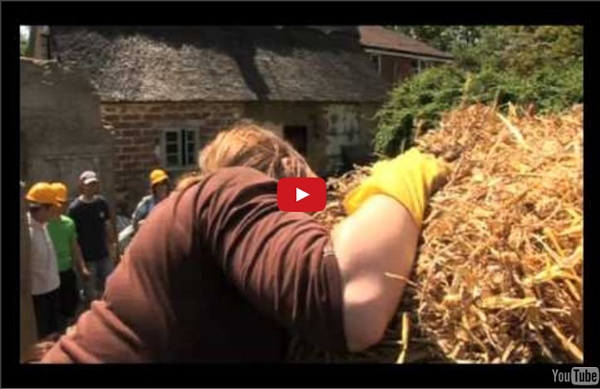



Build Your Own $20 Outdoor Cob Oven | Outdoor Pizza Oven | Cob Ovens (The following entry is all about making a cob oven, a lovely and inexpensive outdoor pizza oven. The construction details have been trimmed back a bit, but this article should still give you a full idea of necessary materials and the building process for making your own oven!) I must admit, I’m a bit of a breadhead. Earlier in the year, the idea of baking in the outdoors in a wood fired oven became something of a romanticized (in every positive sense of the word) notion to me. So I picked up a copy of Kiko Denzer’s Build Your Own Earth Oven, a little gem of a book covering the construction of cob ovens from the ground up. The Foundation With little more than some clay, sand, sawdust, brick, some recycled beer bottles and old cinder blocks, I had everything I needed to make my own oven. The Fire Brick Oven Hearth An insulating layer of beer bottles in a sawdust/clay mortar was assembled on top of the foundation in a ring of cob and beneath the firebrick hearth. Sizing the Cob Oven p.s.
Variation on Our Current Composting Toilet System The Barrel Composting Toilet system is similar to our Bucket-to-Barrel Composting Toilet system, except that it is designed to function without the bucket aspect. Instead, a toilet seat and ventilation system are fitted directly on top of a 55 gallon polyethylene barrel which serves as a composting chamber. By eliminating the need to empty buckets, the design comes a step closer to being permitted in some jurisdictions. It has been chosen as one of 2 designs to be tested in a composting toilet pilot project being permitted by the Arizona Department of Environmental Quality and funded by an Environmental Protection Agency grant to the Tucson-based Water Shed Management Group. The Barrel Composting Toilet system features zero leachate discharge to native soil, full vector control, effective aeration and moisture distribution and is constructed of durable, easily cleaned and non-corrosive materials. The design can be installed indoors or outdoors. System Overview: --Top Layout
Composting Toilet Systems - Oikos Green Building Library Waste Reduction and Recycling Composting toilet systems (sometimes called biological toilets, dry toilets and waterless toilets) contain and control the composting of excrement, toilet paper, carbon additive, and, optionally, food wastes. Unlike a septic system a composting toilet system relies on unsaturated conditions (material cannot be fully immersed in water), where aerobic bacteria and fungi break down wastes, just as they do in a yard waste composter. The primary objective of the composting toilet system is to contain, immobilize or destroy organisms that cause human disease (pathogens), thereby reducing the risk of human infection to acceptable levels without contaminating the immediate or distant environment and harming its inhabitants. This should be accomplished in a manner that is consistent with good sanitation (minimizing both human contact with unprocessed excrement and exposure to disease vectors, such as flies). Self-Contained versus Centralized
Back Country Sanitation Manual (Composting Toilets And Greywater) Books For Maintainers Appalachian Trail Design, Construction, and Maintenance: The primary stewardship manual for volunteers who are involved in designing, constructing, or maintaining portions of the Appalachian Trail. Available through the Ultimate A.T. Store (call 888-287-8673 for A.T. maintainer discount). USDA Trail Construction and Maintenance Notebook Trail Maintainers Corner Safety first Keep safety in mind when working on the Trail. The job hazard analyses (JHAs) posted below provide information on potential hazards, safety gear, and safety recommendations for various types of trail work. Remember that individual Trail maintainers have the obligation to say "NO" and walk away from any situation they determine to be an unacceptable risk. Environmental Planning Trail projects may require review to assure compliance with federal environmental laws and other regulations. Reference Manuals and Plans Backcountry Sanitation Manual Camping Impact Management on the A.T.
What Are Composting Toilets? - Green Homes What are composting toilets? Are they really that much better for the environment? Are they gross? A composting toilet is a miniature ecosystem designed to recycle human excrement safely by containing it while microorganisms convert it to humus. The “humanure toilet” system will almost certainly be unknown to local permitting agencies, which often resist even code and NSF (National Sanitation Foundation) approved systems because of inexperience or assumptions based on experience with pit privies. If designed and operated properly, composting toilets are clean, odor-free and will kill the pathogens in human excrement that spread disease while creating fertilizer and saving a lot of water. For reports from readers who use this eco-friendly option, read the comments to Would You Use a Composting Toilet? — Chris McClellan is the Education Director of the Natural Building Network Photo by Jared C.